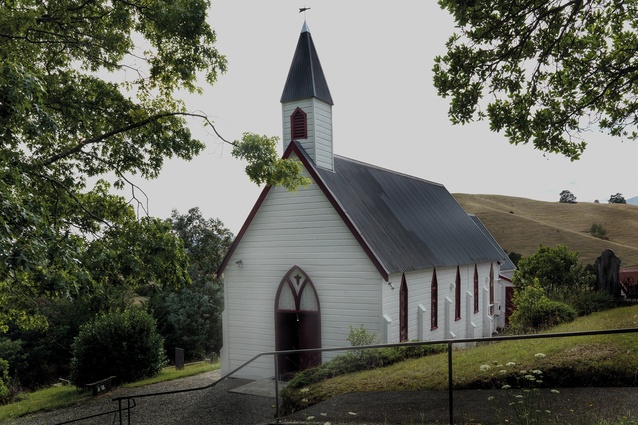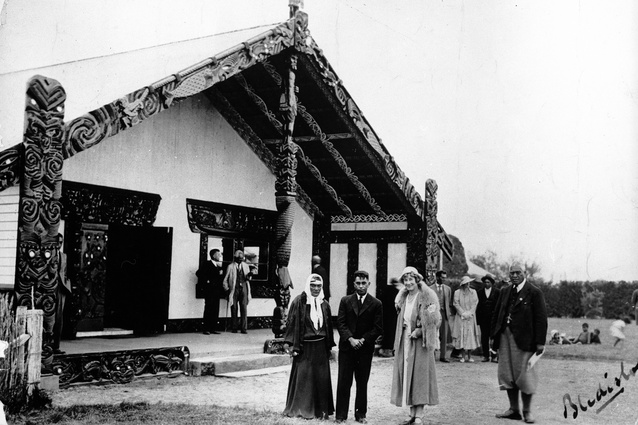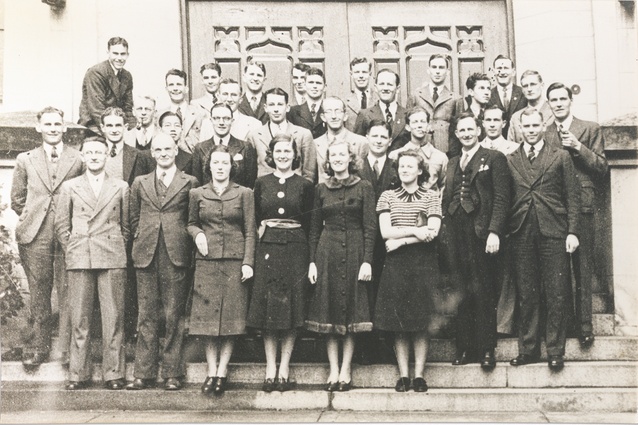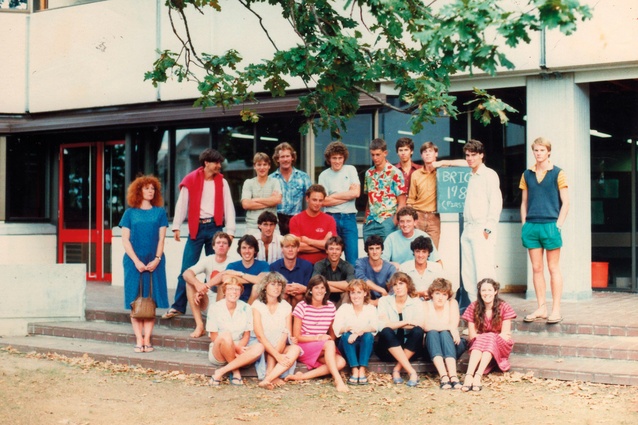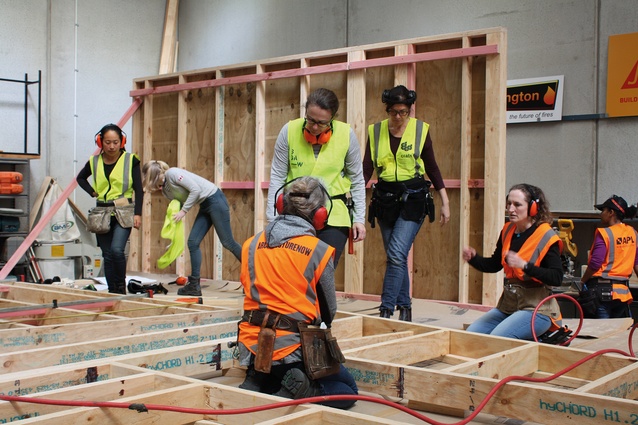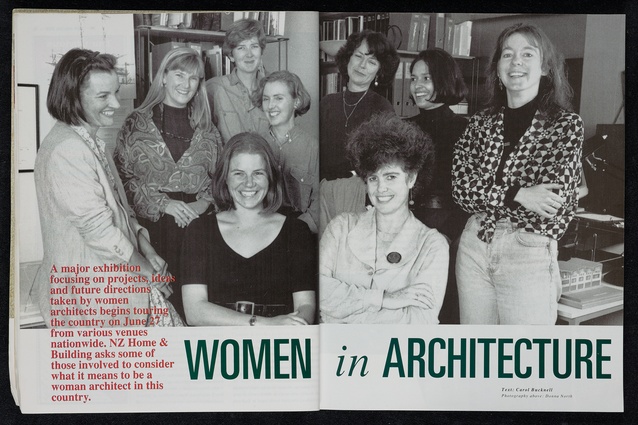Review: Making Space: A history of New Zealand Women in Architecture
As the saying goes, “if you can’t see it, you can’t be it”. Making Space: A history of New Zealand Women in Architecture chronicles women making buildings and landscapes in Aotearoa New Zealand since 1846. However, as a critical project in generating visibility, this book is much more.
With more than 400 generously sized pages, abundant illustrations and an excellent index, the book has provided the space for women to write about the practice of architecture from many different perspectives. It includes 48 chapters written by 30 women, all of whom are architectural historians, academics, students or practitioners in Aotearoa New Zealand. The book has provided space for these women to think and write about their profession, to research their forbears whose work has, in many instances, been hidden in plain sight and to have hundreds of conversations about architecture with their peers. This is a significant achievement worth celebrating.
But what else has this book produced? The book mentions more than 500 women who have worked in the architectural field over this time. Researching their efforts and legacies has included much kōrero, the recording of copious oral histories, the amassing of a deep and wide bibliography of primary sources through personal communication, and the location of numerous documents (letters, diaries, drawings, certificates).

It has also brought together important secondary sources, including PhD theses, newspaper stories and magazine articles. An example of this is found in the chapter titled ‘Te Karanga o te Whao: The call of the chisel’ by Tryphena Cracknell (Rongomaiwahine). This chapter presents stories of Māori women who carve, focusing on those working at architectural scale, both in contemporary times but also reaching back through Ngāti Porou cultural traditions and whakapapa to note the story of waka-builder Iranui, sister of Kahungunu and wife of carver Hīngāngāroa, who demonstrated haumi waka (the dovetailing joint technique) to her brother.
As the story of Iranui demonstrates, and as other sources cited in the chapter attest, gender divisions, while present, were more fluid and less hierarchical for Māori prior to colonisation and, contrary to common understanding, women carved. For this important chapter, the sources include books, journal articles, newspaper stories, PhD theses and seven instances of personal communication with the author. Why is this so important? This direct kōrero is now recorded and publication in this book has rendered the work of these wāhine mau whao (women who carve) visible as an important facet in the architectural history of Aotearoa. This chapter produces a space for these women and their practices and the many-voiced network of research sources holds this space open for further discovery and discussion.
I noted this rich, many-layered use of primary and secondary sources to tell the stories of women’s careers, including chapters on: Lucy Greenish, the first known woman in New Zealand to set up an architectural practice (whose story provided the initial impetus for editor Elizabeth Cox); Nancy Northcroft, who worked in town planning in Christchurch local government and then had a career in private practice; Muriel Lamb, one of the first women to set up her own solo practice in Aotearoa; Lillian Chrystall, who, among many ‘firsts’, was the first woman to win a national-level architectural award; and photographer Irene Koppel, garden designer Anna Plischke and architect Renate Prince, who were all forced into exile by war in Europe and made careers in New Zealand, despite a society that was widely suspicious of ‘enemy aliens’.
The chapter by Elizabeth Cox covering the 1970s, ’80s and ’90s is also rich with sources, including rare published profiles on women architects, interviews of women practitioners by other women practitioners and oral histories. Other prior, significant research projects led by women have helped to establish this genealogy and make this rich history of women working in architecture visible. These include the research carried out by students in Sarah Treadwell’s gender and architecture course at the University of Auckland from 1986, the research for the travelling exhibition ‘Constructive Agenda’ in 1993 and the ongoing Architecture+Women•NZ timeline, a visual and textual archive of women in the profession.
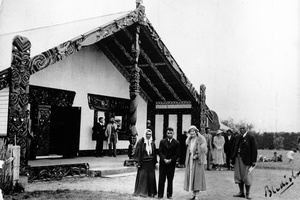
For her chapter on Pacific women, Karamia Müller generated a method of documenting the many and varied ways women with heritage and whakapapa across Te Moana- nui-a-kiwa have made careers working in architecture in Aotearoa. As Müller points out, little to no research has been carried out in this area: “a situation that places many pressures on the few opportunities to tell these stories”.
Inviting six Pacific women from her own community of practice to talanoa (by Zoom, in lockdown, which became a prosperous time for the book’s research), the aspect of service to communities came to the fore. For these women, architecture is ‘more than just building’; it is about the people. “People make the space what it is, regardless of the environment or country.” The conversational threads from the talanoa recorded in Making Space affirm the presence of these women and the unique and exciting ways our built environment will continue to evolve in Aotearoa as they bring their experiences, specific cultural knowledge and collective ways of working into practice.
The short chapter structure makes another kind of space. By reading the chapters out of chronological sequence (as I did) and across topics (such as women focused on sustainability, health care and urban design, and post-earthquake recovery in Christchurch), a space of connection emerged across different women’s experiences over the decades. Enduring themes developed around education and workplace relations, highlighting the difficulty of completing a pathway to registration. Across different forms of architectural education, from apprenticeship where each student paid their architectural employer, to the NZIA Professionals system, which required working for an architect by day and studying at night and in weekends, to the current system of university-based education, the issue of completing the kind of work necessary to further a career continued to surface. Women’s careers have been curtailed by those who would have liked women to work only on domestic spaces, or only in the office but never on site, or only as the draftsperson but never with relationship to a client.
Another important theme that emerged is the way women in architecture have continued to support one another to overcome such obstacles and to assert architecture as a collaborative practice. Examples are plentiful: from students at Victoria University in the 1990s insisting on the value of collaboration through working collectively on projects, to women in solo practice establishing ‘lunch groups’ to share resources and knowledge, to the more consciously activist Women’s Institute of Architecture founded in 1979 (who, a year later, lobbied the Auckland University School of Architecture to appoint women staff) and Architecture+Women•NZ (founded 2011), whose core aims remain visibility and inclusiveness.
The connections we have (and have had) between us felt alive in these chapters; even those that looked back to the early years seemed to resonate as the writers discovered previously unknown projects and legacies in familiar places. I so much enjoyed reading about my own teachers, friends, colleagues and students. In recollecting the ‘Constructive Agenda’ exhibition from 1993, architect Claire Chambers recalled: “The records of earlier women architects gave me a sense of strength and continuity… Eventually, I heard the message which I have so longed to hear: ‘We are here – we exist – we are strong – and you are one of us.’ ” This important new book expands and carries on this work, generously documenting and demonstrating the place women have held in the literal building of Aotearoa as we know it today, while generating a firm platform for much future research.
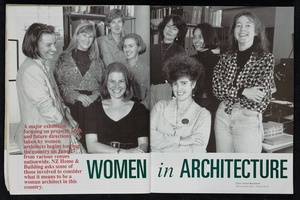
So where to from here? One aspect that remains invisible is the impact of menopause on the career trajectories of women in architecture. Although the make-up of graduates has reached gender parity in the last 15 years, the number of women (and, in fact, the level of diversity of people more generally) in senior leadership roles in our industry remains stubbornly low.While many reasons have been documented for this, the most obvious being the impact of career breaks for parental leave and a reluctance to embrace flexible work hours to support child rearing, the impact of menopause is rarely discussed in our field. For many women, menopause, which can have a wide range of effects, coincides with increased caring responsibilities for ageing parents. This is an area that seems worthy of further research.
At the other end of a career, in the chapter on women’s experiences as students in this century, Ekta Nathu interviewed recent graduates and focused especially on documenting the experiences of minority women. Discussing the “multiple forces at play, interwoven, interlocked that shape your position in the world and your experiences of it”, interviewees recall the burden of translating world views and values that don’t align easily with Western concepts of knowledge and the vulnerability of bringing one’s heritage and culture into this space. Nathu notes there is still much work to be done in supporting ethnic minorities through this qualification and into the fullness of practice. This attention to an intersectional lens brings me to my final point.
This is a project about women in architecture and this lens has provided a powerful platform on which to consider diversity of people and practice much more broadly; as we begin to understand the construction of gender better and embrace a much wider and more diverse gender experience, perhaps the lens of gender will fade into the background and our profession and field will be one where all experiences can contribute richly to the pressing challenges of making our spaces in the era of climate emergency.


